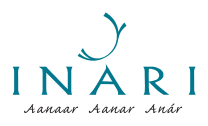Mixture of cultures
Inari is an international tourist destination and a meeting point for cultures. Sámi culture is part of Inari´s multicultural heritage. The Sámi are an indigenous people with their own colorful culture, language, identity and history. They are the only indigenous people within the European Union, spread across Norway, Sweden, Russia and Finland.
![[]](/media/make-inari-your-home/cache/arktinen-el-e4m-e4_jalkakuva-1200x1000,q=85.jpg)
Photo by Juha Kauppinen.
People and languages
Almost one third or the Inari citizens are Sámi. Inari is Finland’s largest municipality by land mass, but total population consists of less than 7000 souls. That is less than 1/2 person per square kilometer!
The total population of Inari municipality is 6 899 (in 2019). The main human settlements are Inari, Ivalo and Saariselkä. Two thirds of the population of Inari municipality live in the village of Ivalo, and Ivalo is also the administrative center of the municipality of Inari. Inari village is the center of Sámi culture. Saariselkä the main tourist resort, so many international and seasonal workers live in Saariselkä area.
In the municipality, three different Sámi languages are officially used side by side with Finnish language: they are North Sámi, Inari Sámi and Skolt Sámi languages. The Sámi languages belongs, like Finnish and Estonian, to the Uralic language family. North Sámi is the most widely spoken of these languages. In Finland, North Sámi is spoken by approximately 2 000 people. Inari Sámi is spoken exclusively in Finland.
Sámi - the indigenous people of Inari
The Sámi people are the indigenous people of Inari, and matter of fact, most of Northern Europe. As indigenous people, the Sámi have the right to maintain and nurture their language, culture and traditional ways of life. The Sámi have their own parliament governing, among others, matters of language and culture. The total Sámi population in Norway, Sweden, Finland and Russia is estimated to be about 75.000, from which about 10.000 live in Finland.
The traditional Sámi livelihoods are fishing, gathering, handicrafts, hunting and or course reindeer herding. Out of the traditional Sámi livelihoods, reindeer herding still functions as one of the important cornerstones of the Sámi culture by offering both language arena as well as material for, among others, clothing, other Sámi handicrafts and food culture. Nowadays most Sámi people work in the same professions as other residents of Inari and there are also modern ways to practice the traditional livelihoods.
The Sámi dress is the most visible of the national symbols of the Sámi. It carries the history of the Sámi people and is an important part of the national identity. Therefore, the use of Sámi dresses by non-Sámi is discouraged. The decorations of the costume, as well as the way it is worn, indicate which part of the bearer comes from and even reveal his or her family and marital status.
For more information about Sámi culture, please visit the homepage of the Sámi parliament.
![[]](/media/make-inari-your-home/cache/thom-reijnders-cwl0snsqigs-unsplash-1200x1000,q=85.jpg)
The Sámi flag. Photo by Thom Reijnders on Unsplash.
